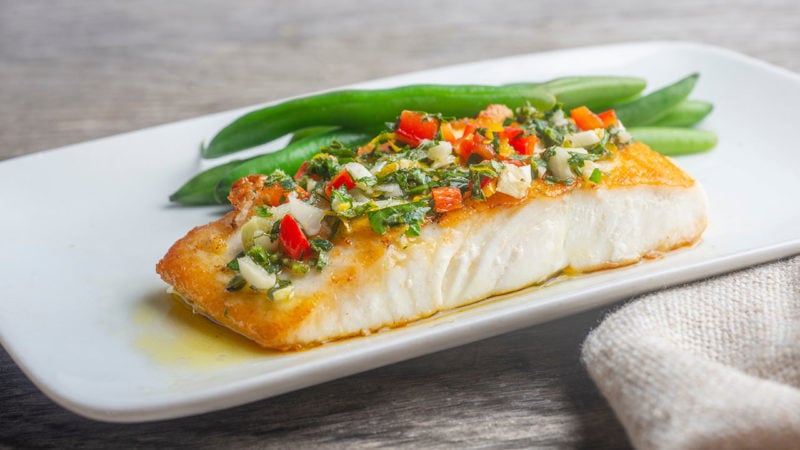You’ve roasted a large fillet of salmon for dinner, and you have a portion of it left. Do you look at that piece of gorgeous fish with dread, knowing it won’t be nearly as good the next day for lunch? The urge to just throw it away may overwhelm you.
If you’ve never handled seafood leftovers before, you’ve probably experienced someone in your workplace heat up cooked fish in the community kitchen’s microwave. The stench seems to last in the room for days. You can’t help but emit a look of disgust.
Literally, reheating seafood stinks. Let’s explore why fish can be so smelly, and what you can do when you have leftovers (other than dump it in the trash).
What Makes Fish Smell?
When you’re buying fish at the market, give it a whiff. Saltwater fish rely on an organic compound called trimethylamine oxide to prevent their cells from carrying too many minerals. When a fish is taken out of the water, that trimethylamine oxide transforms—in a process called carboxylation—into volatile, very smelly amines called trimethylamine and dimethylamine. The longer a fish has been out of the water, the more amines it will contain and the more it will carry that characteristic fishy stench. The fresher the fish, the less it will smell fishy when raw.
There is also a relationship between the Omega-3 acids found in fish and odor.
3 Tips for Mastering Seafood Leftovers
- Think ahead. Plan a use for your leftovers before you cook the fish. Have ingredients on hand to prep, or make the dish ahead with the cooled fish.
- Mix in acid before refrigerating. Acid, especially from citrus, helps neutralize the aromatic compounds that arise from oxidation. Try spritzing citrus juice on the pieces of fish before refrigerating; adding citrus juice to a mixture you create; or ensuring that your initial dish already has ample acid within it.
- Reheat whole pieces low, slow, and covered. Heat, light, and oxygen affect fish. The more applied to it upon reheating, the more it’s going to stink. If you must reheat a whole piece of fish on its own, wrap it in foil or parchment paper and place in the oven at 275°F until heated through to a minimum internal temperature of 145°F as measured with a food thermometer. Covering the fish helps block some light and capture some odor, while the gradual rise in temperature helps stabilize oxidation.
Our Favorite Ways to Use Seafood Leftovers
Sweet Potato Salmon Cakes
There are plenty of recipes available for fish cakes or “fritters.” Here’s a rough guide to one you can whip up at home:
- Wrap a large sweet potato in foil and place on the same baking sheet as the salmon.
- Take salmon out of the oven when ready, but keep the sweet potato in the oven until it bakes for 45-60 minutes.
- Mash the sweet potato and mix in leftover salmon. Add juice from half a lemon. Crack in two eggs. Throw in some bread crumbs or flour to help bind. Season to your liking (I love a simple blend of salt, pepper, garlic powder, and fresh cilantro). Mix together and refrigerate.
- Use a ½ cup measure to portion out your cakes and fry in a nonstick skillet on both sides until golden and heated through.
White Fish Poached in Tomato Broth or Tomato-Based Stew
Have this be your main dish, and you can simply store the leftovers in the fridge and eat the next day. The tomato has enough acid to help neutralize odor, and white fish contains fewer fatty acids anyways. One of my favorite inspiration recipes for this is Alison Roman’s Tomato-Poached Fish with Chili and Herbs.
Fish Tacos
Store leftover white fish with a spritz of lime juice in the fridge, and then reheat the next day (low, slow, and covered!). If you’re feeling ambitious and have salmon on hand, try and smoke it. With the leftovers, make smoked salmon tacos—Cook’s Country has a wonderful recipe that’s inspired by the tacos at Ruddell’s Smokehouse in Cayucos, CA.
Kristina DeMichele is the Digital Content Strategist at Harvard Magazine. She is also a freelance copyeditor who has worked for America's Test Kitchen as the Senior Content Editor of Cook's Illustrated Magazine.



